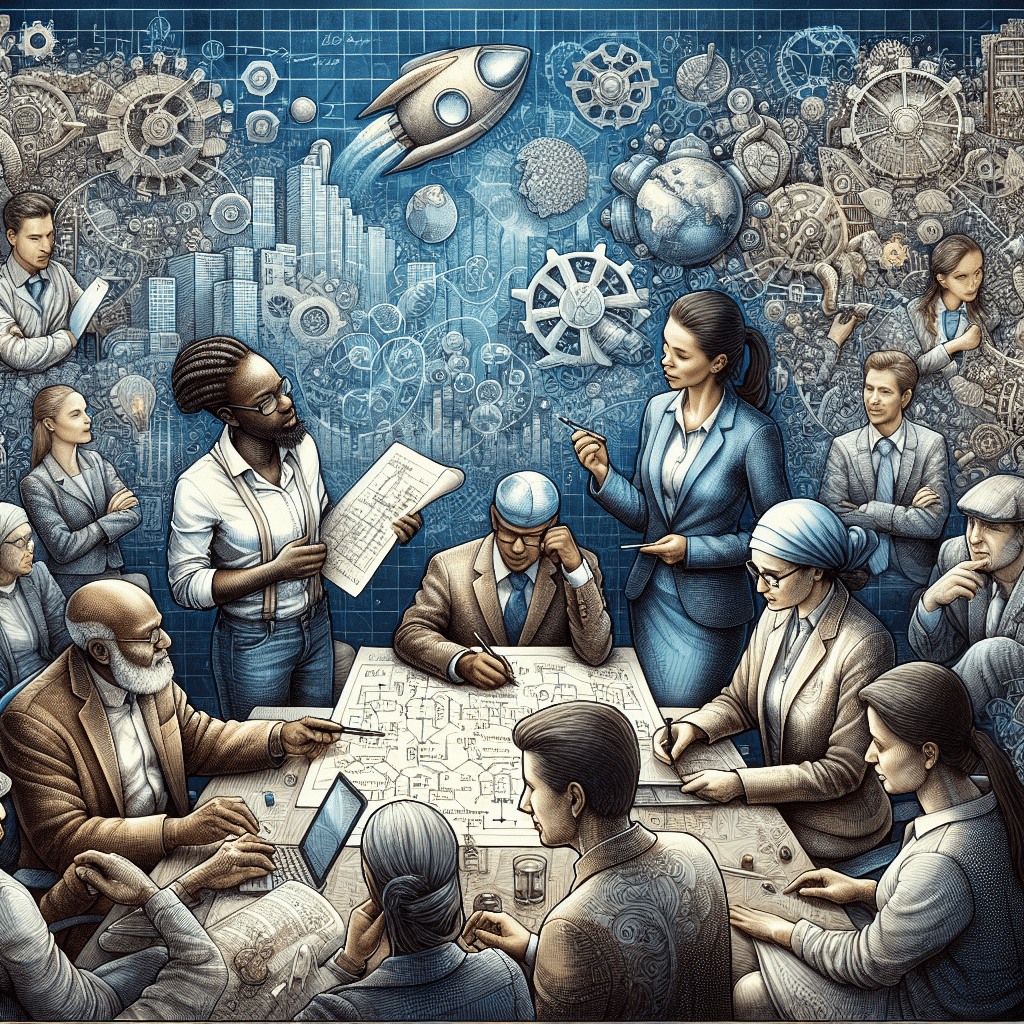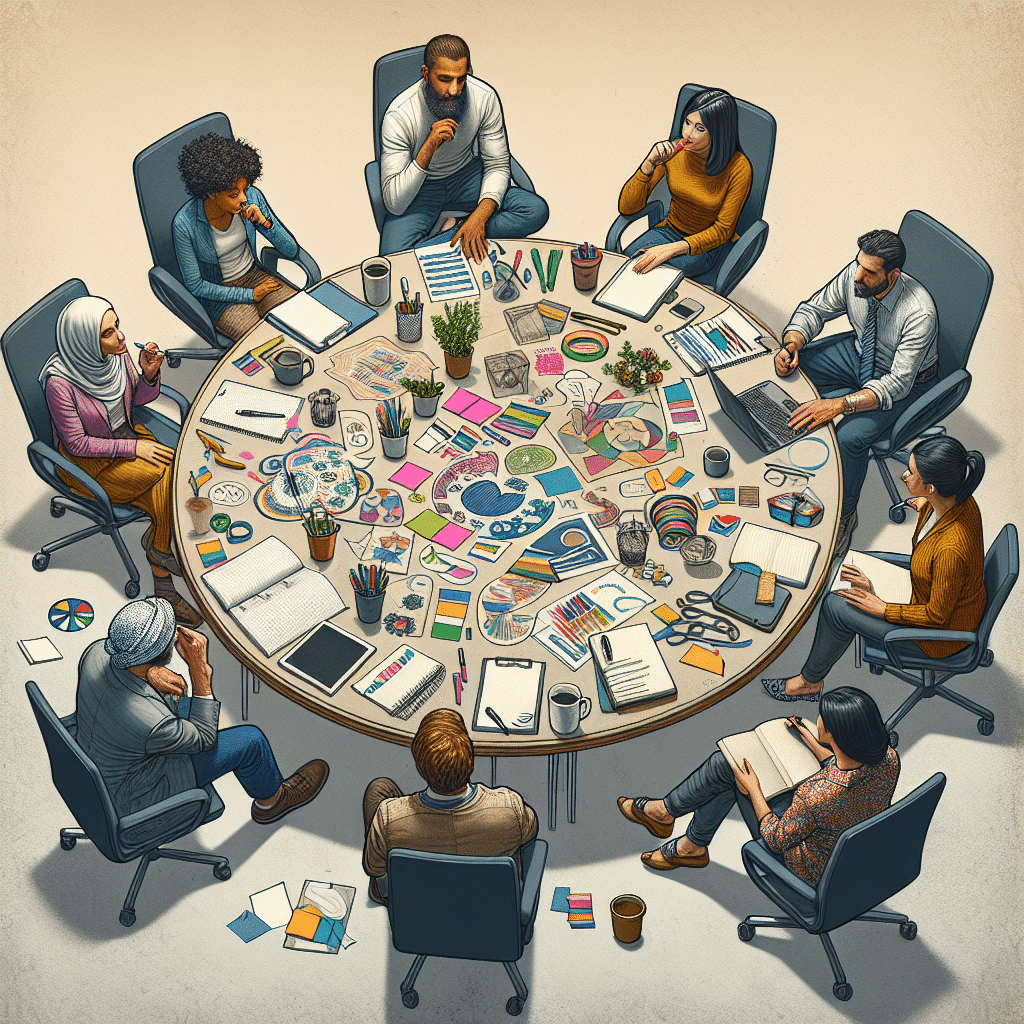
Interpersonal dynamics play a crucial role in problem-solving. When individuals come together to tackle a problem, their interactions and relationships can greatly influence how effectively they are able to reach a solution. Understanding and effectively managing these dynamics is key to successful problem-solving. In this blog post, we will explore the importance of interpersonal dynamics in problem-solving and discuss strategies for improving communication, building trust and collaboration, managing conflict and emotions, and enhancing decision-making in a group setting.
1. Understanding Interpersonal Dynamics
Interpersonal dynamics refer to the way individuals interact and relate to one another within a group or team. Each person brings their own unique perspectives, personalities, and communication styles to the table, which can affect how they contribute to problem-solving efforts. It is important to recognize and appreciate these differences in order to foster a positive and productive group dynamic.
When individuals have a clear understanding of their own strengths and weaknesses, as well as those of their teammates, they can leverage this knowledge to optimize problem-solving strategies. This understanding allows team members to allocate tasks and responsibilities in a way that capitalizes on each individual’s strengths and ensures a well-rounded approach to problem-solving.
The Role of Communication in Problem-Solving
Effective communication is crucial for successful problem-solving. It allows team members to share ideas, information, and perspectives, facilitating a deeper understanding of the problem at hand. Clear and open communication also helps to minimize misunderstandings and misinterpretations, reducing the likelihood of conflicts or roadblocks to progress.
When communicating in a problem-solving context, it is important to be an active listener, giving each team member the opportunity to express their thoughts and opinions. Active listening involves paying attention, asking clarifying questions, and responding in a way that shows understanding and respect. This not only helps to build rapport and trust among team members but also helps to gather diverse insights that can lead to more innovative or effective solutions.
In addition to active listening, effective communication also involves being clear and concise in expressing ideas and providing feedback. Direct and honest communication helps to maintain transparency and ensures that all team members are on the same page. It is also important to be mindful of nonverbal cues, such as body language and tone of voice, as these can convey additional meaning and influence how messages are received.
The Role of Communication in Problem-Solving
Effective communication plays a crucial role in problem-solving and facilitating interpersonal dynamics within a group setting. Without proper communication, teams can struggle to understand the problem at hand, share ideas and perspectives, and work together towards finding a solution.
One aspect of communication that is vital in problem-solving is active listening. Active listening involves fully comprehending and absorbing the information being shared by others. This means paying attention to verbal and non-verbal cues, asking clarifying questions, and avoiding distractions. By actively listening to one another, team members can gain a deeper understanding of the problem and identify potential solutions more effectively.
In addition to active listening, effective communication in problem-solving also requires the ability to clearly and concisely express ideas and thoughts. This includes being able to articulate one’s viewpoint, provide relevant information, and explain reasoning behind suggestions or proposals. Clear communication helps to avoid misunderstandings and fosters better collaboration within the group.
Furthermore, communication in problem-solving should be open and inclusive. All team members should feel comfortable expressing their opinions and concerns without fear of judgment or reprisal. Encouraging open communication creates a collaborative environment where everyone feels valued and can contribute to the problem-solving process.
Another important aspect of communication in problem-solving is the use of effective questioning techniques. By asking insightful questions, team members can gather more information, challenge assumptions, and encourage critical thinking. This can lead to a more comprehensive understanding of the problem and potential solutions.
Lastly, communication should also involve providing constructive feedback. Constructive feedback helps individuals improve their ideas and suggestions, and it also fosters personal growth within the group. By offering constructive feedback, team members can refine their problem-solving approaches and develop stronger solutions collectively.
In summary, communication plays a crucial role in problem-solving and interpersonal dynamics within a group. Active listening, clear and concise expression of ideas, open and inclusive communication, effective questioning techniques, and providing constructive feedback are all key components of effective communication in problem-solving. By prioritizing strong communication skills, teams can enhance their problem-solving abilities and work more efficiently towards finding solutions.
The Role of Communication in Problem-Solving
Effective Communication: The Foundation for Successful Problem-Solving
When it comes to problem-solving in a group setting, effective communication plays a crucial role in achieving successful outcomes. Communication serves as the foundation for understanding and addressing the issues at hand and facilitates the sharing of ideas, information, and perspectives among team members.
Active Listening: One crucial aspect of effective communication is active listening. Active listening involves truly hearing and understanding what others are saying, rather than simply waiting for your turn to speak. By actively listening, you can gain valuable insights and perspectives that can contribute to the problem-solving process.
Clear and Concise Expression: Another essential element of effective communication is clear and concise expression. Clearly articulating your thoughts and ideas allows others to understand your perspective and contribute to the problem-solving process. Avoiding ambiguity and using simple and concise language can prevent misunderstandings and promote a more efficient problem-solving environment.
Open and Respectful Communication: In a group setting, it is crucial to foster an environment of open and respectful communication. This means creating a safe space where team members feel comfortable expressing their thoughts, sharing their concerns, and challenging existing ideas. By promoting open and respectful communication, you can encourage diverse perspectives and facilitate constructive discussions that lead to more innovative problem-solving approaches.
Types of Communication in Problem-Solving
Communication in problem-solving can take various forms, depending on the nature of the problem and the dynamics of the group. Two prominent types of communication in problem-solving are:
Verbal Communication: Verbal communication involves the use of spoken or written words to convey information, ideas, and opinions. This form of communication allows for immediate feedback, clarification, and engagement among team members. Verbal communication is particularly useful for brainstorming sessions, group discussions, and presenting findings or recommendations.
Non-Verbal Communication: Non-verbal communication encompasses gestures, facial expressions, body language, and tone of voice. While it may not involve explicit verbalization, non-verbal cues can convey emotions, attitudes, and intentions. Understanding and interpreting non-verbal communication is crucial in problem-solving, as it provides additional insights into team members’ thoughts and feelings.
The Impact of Communication on Problem-Solving Outcomes
Effective communication has a significant impact on problem-solving outcomes. When communication is clear, open, and respectful, team members feel heard, valued, and engaged. This fosters trust, collaboration, and synergy within the group, leading to more effective problem-solving processes.
On the other hand, poor communication can hinder problem-solving efforts. Misunderstandings, conflicts, and unresolved issues can arise when communication is unclear or ineffective. This can lead to wasted time, decreased morale, and ultimately, subpar problem-solving outcomes.
Therefore, prioritizing and investing in effective communication practices is vital for overcoming challenges, harnessing the collective intelligence of the group, and arriving at optimal solutions through problem-solving.
Managing Conflict and Emotions
The Importance of Managing Conflict:
Conflict is a natural part of working in a group or team, especially when problem-solving is involved. However, conflicts can derail the problem-solving process if not properly managed. Therefore, it is crucial to understand the importance of managing conflict and emotions effectively.
Recognizing and Addressing Emotional Factors:
Emotions can play a significant role in interpersonal dynamics and problem-solving. Individuals may become emotionally invested in their ideas or viewpoints, which can lead to conflicts. Therefore, it is important to recognize and address emotional factors when they arise during problem-solving discussions.
When emotions are high, it is essential to create a safe and supportive environment where everyone feels comfortable expressing their thoughts and concerns. Encourage open and honest communication while also being sensitive to the emotions of others. Active listening and empathy can go a long way in diffusing emotional tension and promoting constructive dialogue.
Employing Effective Conflict Resolution Strategies:
Conflict resolution strategies are crucial for managing conflict in a problem-solving context. One effective approach is to encourage dialogue and active participation from all group members. This ensures that everyone has a voice and an opportunity to share their opinions and perspectives.
Another useful strategy is to focus on finding common ground and shared objectives. By emphasizing areas of agreement, group members can build connections and work towards a collaborative solution. Additionally, it is important to encourage compromise and negotiation to find win-win solutions that satisfy the needs and interests of all parties involved.
Mediating Conflict:
In some cases, conflict may escalate to a point where external intervention is necessary. As a mediator, it is important to be impartial and unbiased. The mediator’s role is to facilitate the resolution process by creating a calm and respectful environment. They can help individuals identify their underlying interests and guide them towards finding mutually beneficial solutions.
It is also crucial for the mediator to manage power dynamics within the group. Ensuring that everyone’s voice is heard and respected is essential for a fair and successful conflict resolution process.
Nurturing Positive Relationships:
Building positive relationships among group members is crucial for effective problem-solving. Strong interpersonal connections foster trust, cooperation, and collaboration, which are essential elements of successful problem-solving.
Encourage team-building activities and promote a culture of respect and support within the group. Recognize and appreciate the contributions of each individual, and create opportunities for feedback and constructive criticism. By nurturing positive relationships, group members can overcome conflicts more easily and work together more effectively towards solving problems.
In conclusion, managing conflict and emotions is essential for effective problem-solving within a group setting. By recognizing and addressing emotional factors, employing conflict resolution strategies, mediating conflicts when necessary, and nurturing positive relationships, groups can navigate conflicts successfully and work towards collaborative solutions.
Enhancing Decision-Making in a Group Setting
Decision-making is a critical component of problem-solving in any setting, and when it comes to group problem-solving, it becomes even more complex. Interpersonal dynamics play a significant role in the decision-making process within a group, as the opinions, perspectives, and experiences of each member need to be considered and combined to reach a collective decision. Here are some strategies to enhance decision-making in a group setting:
1. Encourage open communication
Open and honest communication is key to making informed decisions as a group. Encourage all members to express their thoughts, ideas, and concerns without fear of judgment or criticism. By fostering an environment of open communication, you allow for a diverse range of perspectives to be shared, which can lead to more well-rounded and comprehensive decision-making.
2. Practice active listening
Active listening is an essential skill in group decision-making. Ensure that all members actively listen to one another’s ideas and opinions before formulating their own responses. This encourages mutual respect and helps to ensure that everyone feels heard and valued. When people feel listened to, they are more likely to participate actively in the decision-making process.
3. Utilize consensus-building techniques
Consensus-building techniques, such as brainstorming, can be valuable in group decision-making. By actively generating and sharing ideas, members can create a pool of options from which to choose. This collaborative process allows for creative thinking and helps to increase buy-in from all members of the group. Remember to separate the idea generation phase from the evaluation phase to ensure that all possibilities are considered.
4. Assign roles and responsibilities
To streamline the decision-making process, it can be helpful to assign specific roles and responsibilities to group members. This can include designating someone to facilitate the discussion, take notes, or ensure that all points of view are heard. By clarifying roles and responsibilities, everyone understands their contribution to the decision-making process, which can help maintain focus and productivity.
5. Consider different decision-making methods
Different decision-making methods can be used depending on the nature of the problem and the group dynamics. For example, majority voting can be effective when time is of the essence, but consensus-building methods like nominal group technique may be better for complex or controversial issues. Consider the strengths and weaknesses of each method and choose the most appropriate one for your specific situation.
In conclusion, enhancing decision-making in a group setting involves encouraging open communication, practicing active listening, utilizing consensus-building techniques, assigning roles and responsibilities, and considering different decision-making methods. By implementing these strategies, you can leverage the diverse perspectives and experiences of group members to make informed and effective decisions. Remember, the goal is not to reach a decision quickly but to arrive at the best possible decision considering all relevant factors and perspectives.
Summary
Interpersonal dynamics play a crucial role in problem-solving, as effective communication and collaboration are essential for finding solutions. Understanding these dynamics can help individuals and teams navigate through conflicts, manage emotions, and enhance decision-making in group settings.
Communication is an integral part of problem-solving, as it allows individuals to share information, ideas, and perspectives. Effective communication involves active listening, clear and concise expression, and open dialogue, creating a foundation for collaboration and problem-solving.
Building trust and collaboration is vital for successful problem-solving. Trust enables individuals to feel comfortable sharing their thoughts and ideas, while collaboration fosters teamwork and the pooling of diverse expertise. Establishing a supportive and inclusive environment encourages participation and ensures that all perspectives are considered.
Interpersonal conflicts and emotional reactions are inevitable in problem-solving situations. Managing conflict requires the ability to address disagreements constructively and find common ground. Emotions such as frustration or disappointment can impact problem-solving, so individuals must learn to regulate their emotions and maintain a positive and solution-oriented mindset.
Enhancing decision-making in a group setting involves considering multiple perspectives, analyzing alternatives, and reaching consensus. Inclusive decision-making processes ensure that all voices are heard and valued, increasing the likelihood of finding effective solutions. It is essential to foster a culture where diverse opinions are encouraged and respected.
In conclusion, mastering interpersonal dynamics is essential for successful problem-solving. By understanding communication, building trust and collaboration, managing conflict and emotions, and enhancing decision-making, individuals and teams can effectively navigate problem-solving situations and find innovative solutions.






